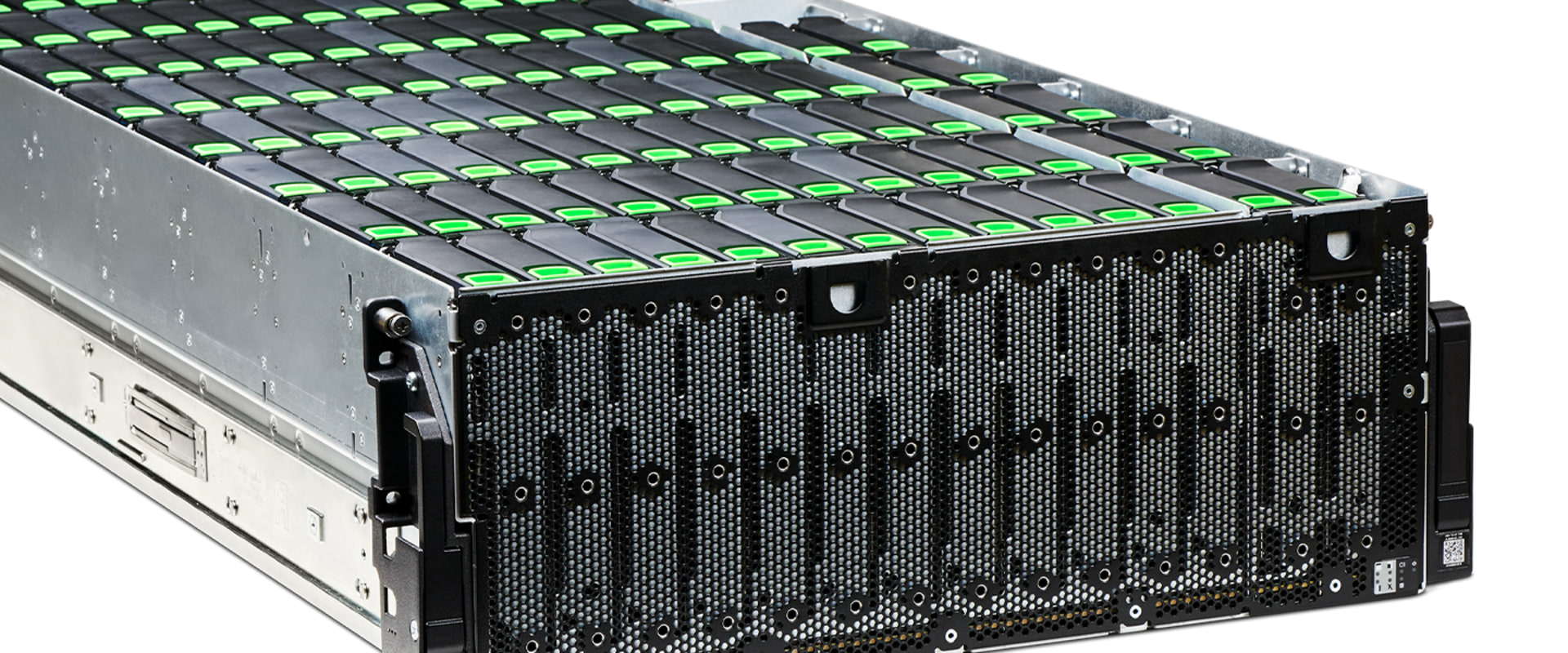Data storage and retrieval are critical components of any IT infrastructure, and selecting and deploying the right hardware for the job is essential. HIPAA-compliant organizations need to ensure that they have reliable, secure, and efficient storage solutions. This article will provide an overview of storage hardware selection and deployment, including considerations for hardware requirements, cost, scalability, and maintenance. We'll discuss how to choose the best storage hardware for your organization's needs, as well as how to implement and maintain it.
By the end of this article, you'll be well-equipped to make an informed decision about the storage hardware for your IT infrastructure.
What is Storage Hardware?
Storage hardware refers to the physical components used to store and manage data. Examples of storage hardware include hard drives, solid-state drives, optical storage devices, RAID systems, and NAS devices. Storage hardware provides the capacity and performance necessary for data storage and management applications.What are the Key Considerations when Selecting Storage Hardware?
When selecting storage hardware, organizations should consider cost, capacity, performance, and data protection.Cost is an important factor when selecting storage hardware as the hardware must fit within the organization’s budget. Capacity should also be considered as the organization needs to ensure it has enough storage capacity to meet its data storage needs. Performance is another key consideration as the storage hardware must be able to provide the required data throughput for its applications. Finally, organizations should also consider data protection capabilities such as encryption, data redundancy, and backup capabilities.
What are the Steps for Deploying Storage Hardware?
Deploying storage hardware typically involves four key steps: planning, installation, configuration, and maintenance and upgrades.Planning involves researching and selecting the appropriate storage hardware, assessing current system requirements and budget constraints, and creating a deployment plan. Installation involves physically installing the storage hardware in the environment. Configuration involves configuring the storage hardware to meet its intended purpose. Finally, maintenance and upgrades involve regularly monitoring the storage hardware’s performance and making any necessary updates or upgrades.
Best Practices for Implementing Storage Hardware for HIPAA Compliance
When implementing storage hardware for HIPAA compliance, organizations should take steps to ensure that their data is securely stored and managed.This includes regularly monitoring the data to ensure that it is secure and compliant with HIPAA regulations. Organizations should also ensure that their storage hardware is regularly updated with any applicable security patches. Finally, organizations should consider using encryption on their storage hardware to further enhance its security.
Summary
Storage hardware selection and deployment is an important topic for organizations that need to ensure their data is securely stored and managed in accordance with HIPAA requirements. When selecting storage hardware, organizations should consider cost, capacity, performance, and data protection capabilities.Deployment typically involves four key steps: planning, installation, configuration, and maintenance and upgrades. Organizations should also take steps to ensure that their storage hardware is securely implemented and maintained for HIPAA compliance.
Summary
This article provides an overview of storage hardware selection and deployment for HIPAA IT Infrastructure. It covers key points such as hardware selection criteria, deployment considerations, and best practices for successful storage hardware implementation.It is important to ensure the data is securely stored and managed in accordance with HIPAA requirements. When selecting storage hardware, organizations should consider factors such as cost, performance, scalability, and reliability. Additionally, organizations should be aware of the potential impact on their existing infrastructure, especially when deploying new storage hardware. Finally, organizations should ensure they are following best practices such as ensuring redundancy and implementing regular backups.
What is Storage Hardware?
Storage hardware is the physical infrastructure that supports data storage and management.It includes components such as hard drives, tapes, RAID arrays, and flash storage. Storage hardware is an important part of a HIPAA IT Infrastructure as it can help ensure that data is securely stored and managed in accordance with HIPAA requirements. The selection criteria for storage hardware will vary depending on the organization’s needs. Factors to consider include the type of data being stored, the expected size of the data set, performance requirements, budget, and the need for scalability.
Organizations should also consider their backup and disaster recovery needs when selecting storage hardware. When deploying storage hardware, organizations should consider their current infrastructure and any potential changes that may need to be made to ensure compatibility. Organizations should also ensure that their storage hardware is properly configured for optimal performance and security. Proper maintenance and monitoring of storage hardware is also important for ensuring data security. Organizations should consider best practices when implementing storage hardware in a HIPAA IT Infrastructure. This includes following security protocols, using encryption to protect data, and regularly backing up data.
Organizations should also make sure their storage hardware is regularly updated with the latest security patches.
Best Practices for Implementing Storage Hardware for HIPAA Compliance
Organizations that need to ensure they store and manage their data securely in accordance with HIPAA regulations should consider the best practices for implementing storage hardware. This includes selecting hardware that meets the necessary security requirements, developing a comprehensive deployment strategy, and testing the hardware before it is used in production.Hardware Selection Criteria
. When selecting hardware for HIPAA compliance, organizations should consider factors such as cost, reliability, scalability, and ease of use.Additionally, the hardware should meet certain security requirements such as encryption and access control.
Deployment Considerations
. Organizations should also consider how they will deploy the storage hardware. This includes addressing physical security, setting up access control systems, and ensuring backups are taken on a regular basis.Testing. Before the storage hardware is used in production, it should be tested to ensure it meets all the necessary requirements. This includes running tests such as stress tests, performance tests, and security audits.
What are the Key Considerations when Selecting Storage Hardware?
When selecting storage hardware for HIPAA IT Infrastructure, there are several key criteria to consider. Cost, capacity, performance, and data protection are all important factors that should be taken into account when selecting storage hardware.Cost is one of the most important considerations when selecting storage hardware. Organizations need to make sure they are not overspending on storage hardware or underspending and getting a low-quality product. It is important to consider both the upfront cost of the hardware as well as any associated maintenance and support costs. Capacity is another key factor to consider when selecting storage hardware. Organizations should determine how much storage space they need and select hardware that meets those needs without overbuying.
Performance is also an important factor when selecting storage hardware. Organizations need to select hardware that can handle the workloads they plan to use it for. This includes consideration of the hardware's read/write speed, data transfer rate, and other performance metrics. Finally, data protection is an important consideration when selecting storage hardware. Organizations need to make sure that the hardware they select includes features such as encryption, backups, and redundancy that will ensure their data is secure and protected.
What are the Steps for Deploying Storage Hardware?
Deploying storage hardware for HIPAA IT Infrastructure requires careful planning and execution.This article outlines the steps for deploying storage hardware, such as planning, installation, configuration, and maintenance.
Planning:
Before deploying storage hardware, organizations should assess their current hardware infrastructure and develop a plan to ensure that the new storage hardware meets their requirements. This includes assessing the hardware's capacity and compatibility with existing systems, as well as evaluating its security features and data protection capabilities. Organizations should also consider scalability and future growth potential when selecting storage hardware.Installation:
Once the hardware has been selected, it must be installed properly.This includes connecting the hardware to the organization's network and configuring it with the necessary settings. It is important to ensure that all installation steps are carried out correctly in order to prevent any potential problems or security risks.
Configuration:
After the installation is complete, it is important to configure the hardware properly. This includes setting up the necessary user accounts, assigning permissions and access rights, and configuring the data storage options. It is also important to ensure that all security measures are in place, such as firewalls, encryption, and authentication.Maintenance:
Finally, organizations should implement a maintenance plan to ensure that their storage hardware remains secure and reliable.This includes regular backups, updates, and patches, as well as monitoring for any potential issues or security risks. By following best practices for storage hardware maintenance, organizations can ensure that their data is properly protected and their systems remain secure. In conclusion, storage hardware selection and deployment for HIPAA IT Infrastructure is a critical factor for organizations to consider when ensuring their data is securely stored and managed. By considering key selection criteria, following the steps for deployment, and implementing best practices for HIPAA compliance, organizations can ensure their data is secure and compliant with HIPAA regulations. Organizations should take the time to assess the different storage hardware options available and choose the one that best suits their needs. The selection process should also consider both the cost of the hardware and the cost of maintaining it over time.
Following a structured deployment process will help ensure all stages are completed quickly, efficiently, and securely. Lastly, organizations should always follow best practices to guarantee their data is properly stored and managed in accordance with HIPAA requirements.








Leave Message